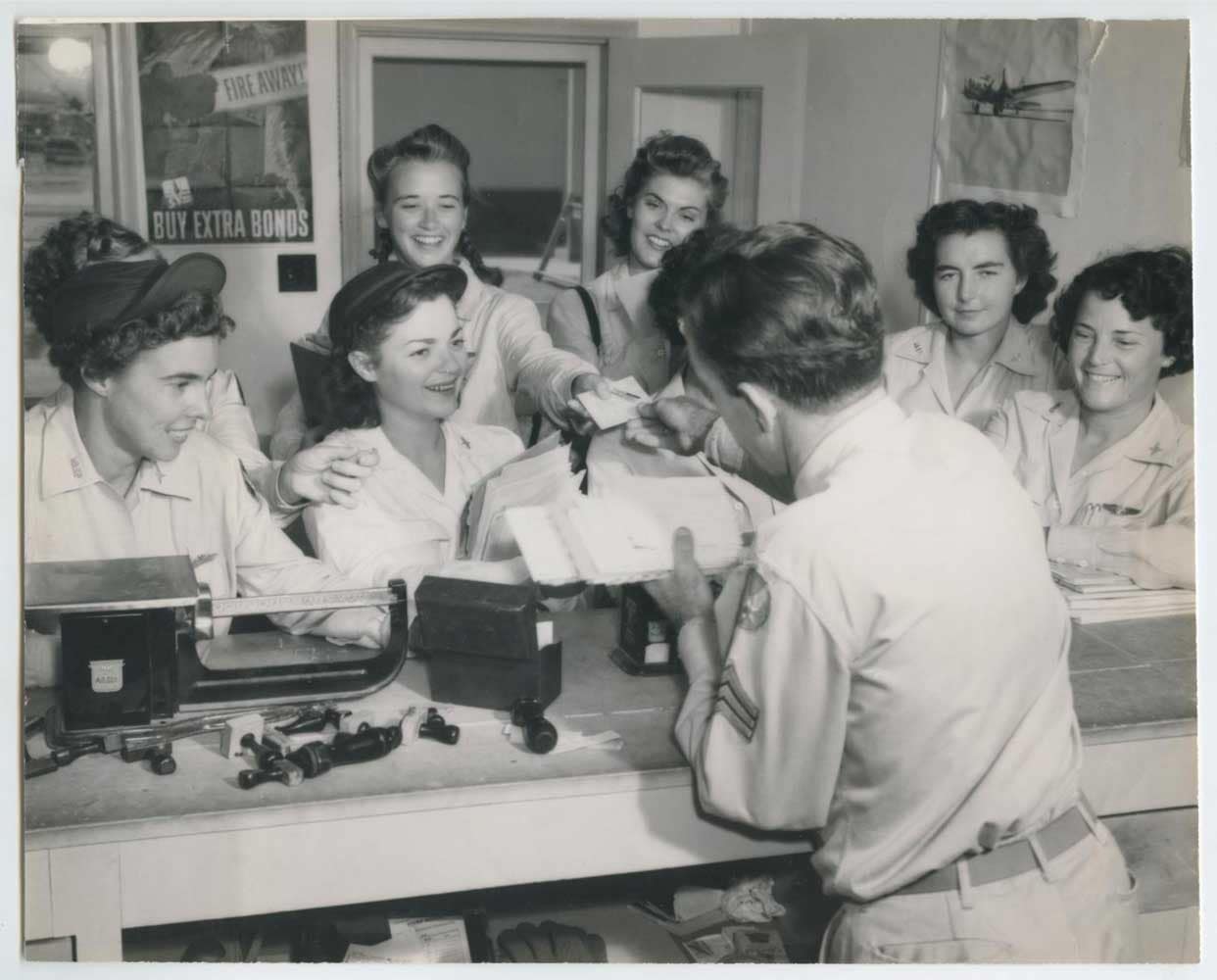
Nancy & Jackie, Before the WASP:
Roosevelt Field & The Hempstead Plains of Long Island

Commerce Roosevelt Field L.I. c1936
Nancy Harkness Love and Jackie Cochran were two women from two different walks of life. Theirs was a true dichotomy, a contrast of personality and life experience, before and after the Women’s Auxiliary Flying Squadron and the Women’s Flying Training Detachment programs became one.
From the 150 miles east of Wilmington, Delaware, where the WAFS first reported for duty in 1942, and the 1,600 miles east of Ellington Field, where the WFTD began that same year before its move to Sweetwater, lay a geographically natural airfield on the Hempstead Plains of Long Island called Roosevelt Field, and that is where Nancy and Jackie’s paths and eventual place in aviation history would cross in the years before the WASP. Roosevelt Field was known as ‘The World’s Premier Airport’ and was the center of the aviation world between the two World Wars. Every aviator of note came to Roosevelt Field and there was train service from Manhattan, where many of the early aviators lived, to conveniently get them there. Two of them were Nancy and Jackie.

Aircar at Roosevelt Field L.I. c.1937
In the 1930s, during the Golden Age of Aviation, and in the two decades prior to that, the Hempstead Plain was the aviation hub of the world. Aviators came to the Plains from all over the country and the world, to explore, challenge, and exceed the sky’s limits. Many of them became famous, others lesser known or obscure, outside of aviation history books. But there on the Hempstead Plains, Harriet Quimby became the first licensed woman pilot in the United States in August of 1911, and in 1927, Elinor Smith became the youngest licensed pilot in the world at age 16, setting multiple endurance, speed, and altitude records during her flying career. Two years later, on November 2, 1929, twenty-six women pilots gathered at Curtiss Field, Valley Stream on the Hempstead Plains to form the Ninety-Nines; its name coined by Amelia Earhart who was one of the first 26 women who attended the first meeting and frequented Roosevelt Field as well. Nancy Harkness was only 15 at the time.
In August of 1930, Nancy climbed into a single-engine, tandem Fleet trainer with her instructor and by November of that same year she obtained her private pilot’s certificate at age 16. By April of 1932, at 18 years of age, she earned her limited commercial license at Roosevelt Field and in 1933 she logged 200 hours and passed the written tests for her transport license. In 1934 she applied for membership in the Ninety-Nines and would later become close friends with one of the organizations original 26 charter members, Betty Huyler Gillies. Betty, who had her first flying lesson in an OX-5 Travelair at Roosevelt Field, was later the second woman to join the Women’s Auxiliary Ferrying Squadron (WAFS) in Wilmington, Delaware.

Mrs. Grover; Loening with Loening ‘Commuter’ 1936
Sands Point L.I.
In 1934 Nancy moved to New York and shared an apartment near Washington Square with two other women pilots. With a mutual passion for flying, the three young pilots would go to Roosevelt Field at sunrise to fly. By the end of that winter, they each went their own way. Nancy became a sales and demonstration pilot in Boston and worked as an air marking pilot between 1935-1937. In 1937-1938 she test-flew for Gwinn Aircar before returning to sales and demonstration piloting up until 1942 when Nancy became the commander of the WAFS. Whether for recreational or work purposes, many of the hours logged into Nancy’s logbook in the years before the WASP, were flown to and from the runways at Roosevelt Field on the historic Hempstead Plains of Long Island. And the rest, as they say, is history.

Aircar Roosevelt Field L.I. c.1937
Upcoming in next month’s blog post – Part II: Nancy & Jackie Before the WASP: Jacqueline Cochran

Written by: Julia Blum
Photos courtesy of: Cradle of Aviation Museum | New York Heritage (nyheritage.org)
About Julia Blum:
Julia Lauria-Blum earned a degree in the Visual Arts at SUNY New Paltz. An early interest in women aviation pioneers led her to research the Women Airforce Service Pilots of WWII. In 2001 she curated the permanent WASP exhibit at the American Airpower Museum (AAM) in Farmingdale, NY, and later curated ‘Women Who Brought the War Home, Women War Correspondents, WWII’ at the AAM. She is the former curatorial assistant & collections registrar at the Cradle of Aviation Museum on Long Island and is currently editor-in-chief for Metropolitan Airport News.
Julia is the proud mother of two daughters and a rescued Boxer. Her many interests include swimming, painting, traveling, aviation history, cooking, and storytelling.

